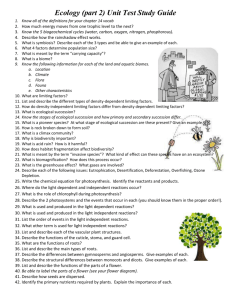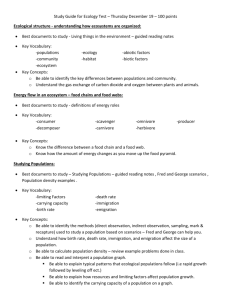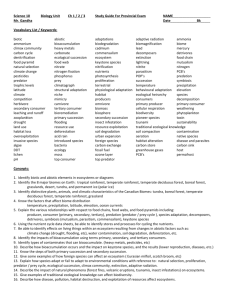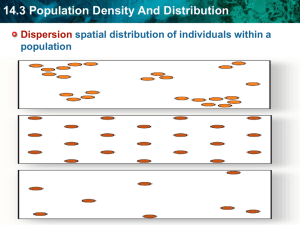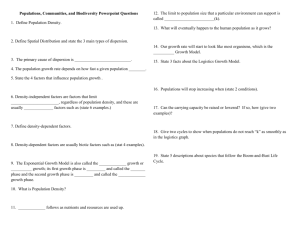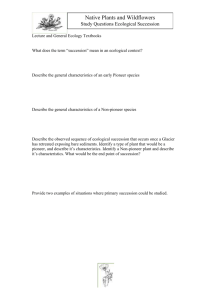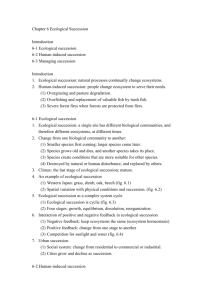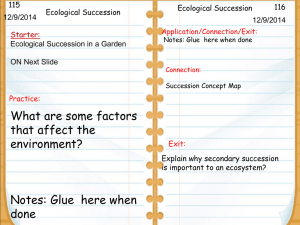Ecological Succession Introductory Activity
advertisement
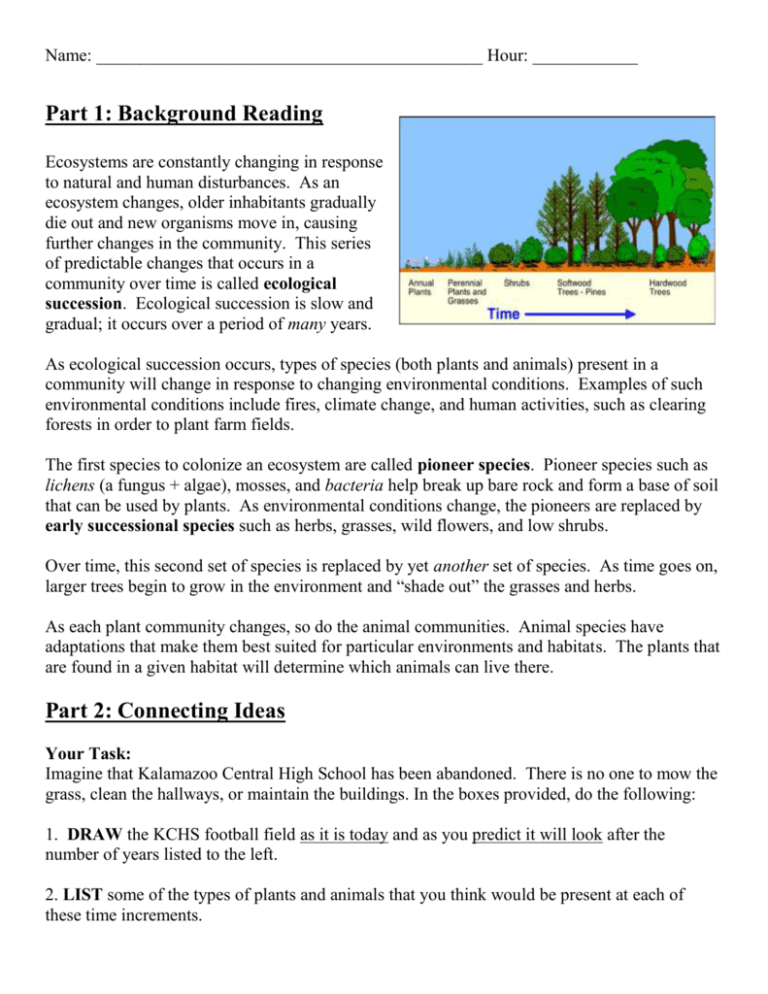
Name: ____________________________________________ Hour: ____________ Part 1: Background Reading Ecosystems are constantly changing in response to natural and human disturbances. As an ecosystem changes, older inhabitants gradually die out and new organisms move in, causing further changes in the community. This series of predictable changes that occurs in a community over time is called ecological succession. Ecological succession is slow and gradual; it occurs over a period of many years. As ecological succession occurs, types of species (both plants and animals) present in a community will change in response to changing environmental conditions. Examples of such environmental conditions include fires, climate change, and human activities, such as clearing forests in order to plant farm fields. The first species to colonize an ecosystem are called pioneer species. Pioneer species such as lichens (a fungus + algae), mosses, and bacteria help break up bare rock and form a base of soil that can be used by plants. As environmental conditions change, the pioneers are replaced by early successional species such as herbs, grasses, wild flowers, and low shrubs. Over time, this second set of species is replaced by yet another set of species. As time goes on, larger trees begin to grow in the environment and “shade out” the grasses and herbs. As each plant community changes, so do the animal communities. Animal species have adaptations that make them best suited for particular environments and habitats. The plants that are found in a given habitat will determine which animals can live there. Part 2: Connecting Ideas Your Task: Imagine that Kalamazoo Central High School has been abandoned. There is no one to mow the grass, clean the hallways, or maintain the buildings. In the boxes provided, do the following: 1. DRAW the KCHS football field as it is today and as you predict it will look after the number of years listed to the left. 2. LIST some of the types of plants and animals that you think would be present at each of these time increments. Time Today 10 Years from now 50 Years from now 200 Years from now Drawing Plants/Animals Part 3: Applying Our Understanding 1. What is ecological succession? 2. How is primary succession different from secondary succession? 3. How is primary succession similar to secondary succession? 4. What is the first group of organisms to colonize an area called? 5. Which species are able to live on bare rock? 6. What situations/conditions lead to the start of primary succession? 7. What situations/conditions lead to the start of secondary succession? 8. Think and Predict: A windstorm in a forest blows down all of the large trees in one part of the forest. Soon, sun-loving plants (like grasses and wildflowers) sprout up in the new clearing. A) What type of succession is this? B) What might this patch of forest look like in 5 years? C) What might this patch of forest look like in 100 years?

